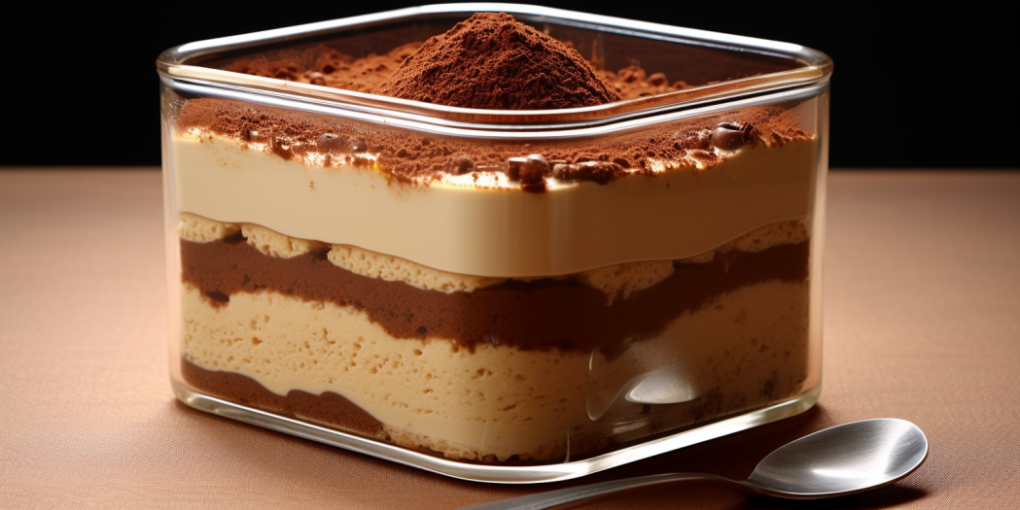
Preserving the Pleasure: A Detailed Study of Tiramisu’s Shelf Life
Tiramisu, a timeless Italian dessert, is a harmonious blend of coffee, cocoa, mascarpone cheese, and savoiardi biscuits. With its multifaceted flavors, it’s no surprise that the question “how long is tiramisu good for?” often comes up among dessert lovers. With an aim to offer a comprehensive insight into this, we will delve into its various elements – preparation, storage, consumption, and a lot more.
Ingredients of Tiramisu
Firstly, let’s analyze what tiramisu is made of, which is key to understanding its shelf life.
- Savoiardi biscuits: Commonly known as ladyfingers, these biscuits give the dessert a soft yet firm base. They are often soaked in a bitter coffee solution, which adds a layer of complexity to the dessert’s taste profile;
- Mascarpone cheese: This rich, creamy cheese is the dessert’s heart, providing a unique taste and texture;
- Eggs: Eggs are vital, used both in the custard and to whip the cream;
- Sugar: Sugar acts as the balancer, neutralizing the bitterness of the coffee and the cocoa, sweetening the mascarpone cheese;
- Coffee and alcohol (typically Marsala or rum): These elements infuse the biscuits with flavor and enhance the dessert’s overall taste;
- Cocoa: Cocoa is usually sprinkled on top, offering a slight bitter counterpoint to the dessert’s sweet and creamy layers.
Given the nature of these ingredients, especially the dairy and egg content, the lifespan of tiramisu is limited.
The Life Cycle of Freshly Prepared Tiramisu
Freshly prepared tiramisu is an exquisite experience, with its creamy layers punctuated by coffee-infused ladyfingers. Though this dessert is best consumed fresh, let’s analyze how its texture and flavor profile evolve over the initial days after preparation.
- Day 1: Tiramisu tastes best when freshly made. After a few hours in the refrigerator, allowing the flavors to meld together, it’s ready to be savored;
- Day 2: On the second day, the dessert will still taste fantastic, as the flavors continue to meld and mature. The texture remains relatively stable, with the biscuits retaining some of their firmness;
- Day 3: By this point, the dessert will still be palatable, but the texture may start to evolve slightly as the biscuits absorb more moisture. The flavors will still be pleasant, although they may start to mellow out.
Storing Tiramisu

Given that immediate consumption isn’t always possible, proper storage is crucial to preserving tiramisu’s shelf life.
Refrigeration
If you’re planning to consume your tiramisu within a few days, refrigeration is the way to go. Here’s a step-by-step guide to storing tiramisu in the fridge:
- Cover: The dessert should be covered with cling film or stored in an airtight container to prevent it from absorbing the smells of other foods in the refrigerator;
- Temperature: The refrigerator should be set at or below 40°F (4°C), the safe temperature for storing most foods;
- Consume within 3-4 days: After four days, while the dessert might still be safe to eat, its quality begins to decline.
To illustrate, here is a table depicting the transformation of tiramisu when stored in the fridge:
| Refrigerator Storage Period | Description |
|---|---|
| Day 1-2 | Tiramisu retains excellent taste and texture. |
| Day 3-4 | Tiramisu is still good, but the texture continues to soften due to moisture absorption by the ladyfingers. |
| After Day 4 | Although it may still be safe to eat if properly stored, the quality of the tiramisu decreases significantly. |
Freezing
If you wish to preserve your tiramisu for an extended period, freezing is a feasible option. Follow these steps for effective freezing:
- Packaging: Place the tiramisu in an airtight container suitable for freezing or tightly wrap it in cling film and then a layer of aluminum foil;
- Freezing: Freeze the tiramisu at 0°F (-18°C) or below;
- Thawing: When you’re ready to enjoy your tiramisu, thaw it in the refrigerator for several hours, or overnight if possible. Never thaw it at room temperature, as this could encourage bacterial growth.
Bear in mind that freezing might slightly alter the texture of your dessert, especially the creaminess of the mascarpone layer and the firmness of the ladyfingers. It’s recommended to consume frozen tiramisu within one month for the best quality, although it will remain safe indefinitely if kept frozen at 0°F (-18°C).
| Freezer Storage Period | Description |
|---|---|
| First Week | Frozen tiramisu maintains most of its original taste and texture. |
| Within 1 Month | Some texture changes may be noticeable, but the dessert still tastes good. |
| Beyond 1 Month | Although still safe to consume, the dessert’s quality starts to decrease significantly. |
Conclusion
The shelf life of tiramisu is an intricate interplay of its ingredient composition, preparation methods, and storage conditions. While the gastronomic excellence of tiramisu is best enjoyed fresh, proper storage techniques can extend its enjoyment over time. The key takeaway is to consume refrigerated tiramisu within 3-4 days and frozen tiramisu within a month for optimal taste and texture. Nonetheless, as with any food item, safety should always be prioritized, so any noticeable signs of spoilage should signal that it’s time to discard the dessert. Savor your tiramisu while it’s in its prime, and this classic Italian dessert will rarely disappoint.
FAQS
No. Given its dairy and egg content, tiramisu should not be left out at room temperature for more than two hours. It should always be stored in the refrigerator or freezer to prevent the growth of bacteria.
Technically, it may still be safe if there are no signs of mold, off smell, or texture changes. However, it’s not recommended as the quality will have significantly deteriorated.
Refreezing thawed tiramisu is not advisable as it can lead to texture changes and potential bacterial growth during the thawing process.
Look for changes in smell, appearance, and texture. If the dessert smells sour, looks moldy, or has a soggy texture, it’s best to discard it.